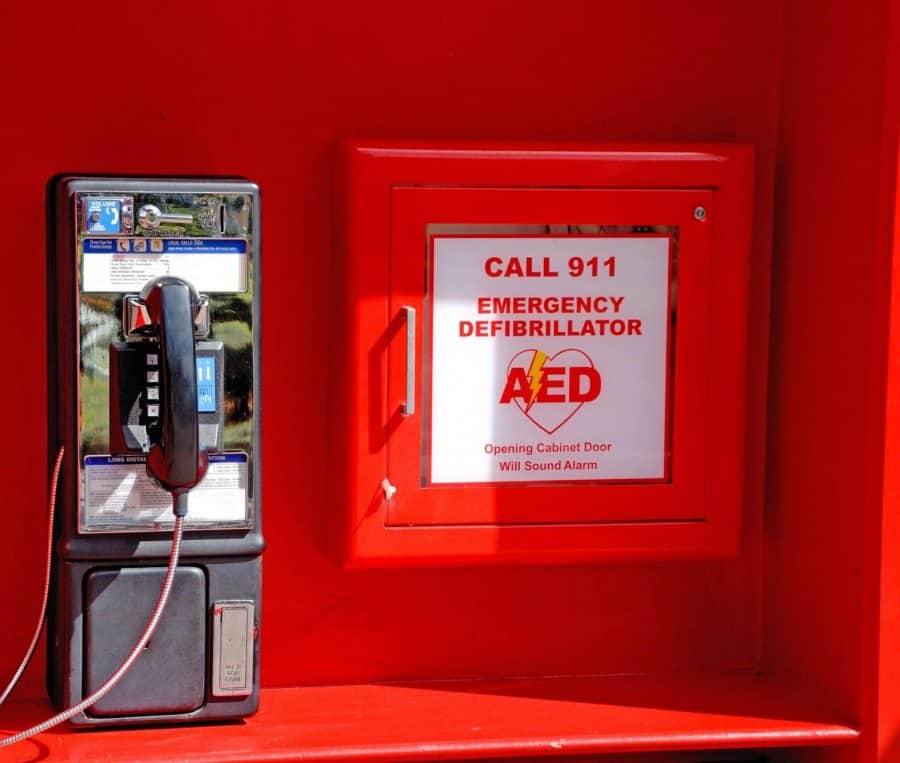Life-saving training offered at University
March 5, 2020
The University of Alabama offers Save a Life Training (SALT) and ‘Stop the Bleed’ training for faculty, staff and students for free to ensure the safety of all on campus. The instructors train participants through repetition with enthusiasm and keep the environment energized to hold their attention.
Any moment can turn into a tragedy. Threatening cardiac events and heart complications can happen just as people clink their glasses in a bar or flip to the right page of their chemistry textbook. It’s a dark reality that Glen Davis is all too aware of.
“Life is precious,” Davis, an EMS director, said. “So it kind of gets emotional. [My co-worker] and I, when we were with the fire department, we faced people dying [and saw] the anguish on their family member’s face, knowing that if they’d done CPR that person would’ve had a better chance, or if they had stopped that bleeding that they’d have a chance.”
Surrounded by mannequins laid out on tables and speakers playing music like “Stayin’ Alive,” Davis led a Save a Life Training (SALT) session near the end of February. On the third Friday of every month, participants trickle into a room in the Northeast Medical Building from 9 to 11 a.m for the seminar, which is free and open to all faculty, staff and students.
The training began in August 2017 and has certified over 900 people since then. Travis Parker, the EMS program specialist, said they decided to offer this training after the spike of several school shootings happening around the nation. He said the Virginia Tech incident was one of the biggest events that encouraged providing life-saving training here at the University.
“We knew we were not immune to [disastrous events],” Parker said. “We knew that we have been lucky over the years, but we knew this was still a big possibility even here at The University of Alabama. Not only that, but we also knew that natural events like the tornado in 2011 that came through. We wanted people to be prepared in case they had an issue where people were traumatically injured and had bleeding that they needed to stop. If you don’t stop the bleeding, then life leaves the body.”
This session teaches both high-quality CPR and ‘Stop the Bleed’ training, so participants spend two hours together, keeping in mind that during CPR, the goal is to keep the blood flowing, while during ‘Stop the Bleed,’ the goal is to stop the flow so the wound can close up.
Davis suggests people ought to complete this training every two years.
“If you don’t use it, you lose it, and that’s the way it is with this training,” Parker said. “If they don’t actually do CPR [or] a stop-the-bleed situation, then they’re not going to know what to do once that situation comes up.”
James Brock, an assistant professor in aerospace studies, participated in the training last week and said it was a good refresher. With his air force background, he was taught more combat-related scenarios, but he said this training has the same concepts.
“They try to make it as realistic as possible as to what you would encounter in a University experience, worst-case scenario obviously, but they’re very closely related,” Brock said. “There’s not a lot of differences as far as the overall concepts go.”
Davis said the American Heart Association received funding to do a Tuscaloosa County hands-only CPR campaign. Along with the funding came several mannequins. They shared the SALT training with the Heart Association. What Parker and Davis would like to do is train 100% of the faculty, staff and students.
Davis said that with this addition of the equipment they can reevaluate where they are going with it. They hope to change this presentation from being just them to having other people become trainers and to give them the equipment to have at their own building where they can train people there. By doing this, the new trainers can train internally within their building and can have a refresher session anytime they would like.
They strive to put a pack of 10 mannequins in every building, or at least 80% of the buildings, and people can have their own trainers.
“If we can get the equipment to the people where it is readily accessible, and trainers available, then we can obviously be more realistic to achieve our goals of having everybody trained in high-quality, hands-only CPR on this campus in a shorter amount of time,” Davis said.
In the case of a traumatic event, Parker and Davis are providing the training, putting AEDs (automated external defibrillator) out there, putting bleeding control kits out there, and now they want to put the training into the minds of others so that they’re not unprepared when they open the kits. Parker said people need to know what to do to save that person’s life.
“We feel like everybody has a right to expect to be safe on campus, and that’s one of the core values of this University, and that’s one of Glen and my core values as well, is that everybody should feel safe when they’re on this campus,” Parker said. “And we feel like if they go into cardiac arrest due to a cardiac event that people around should be trained.”
The next SALT training will be held on the fourth Friday of March due to spring break.
“You never know when you’re going to need that training, and you can’t get it when it’s too late,” Brock said.










